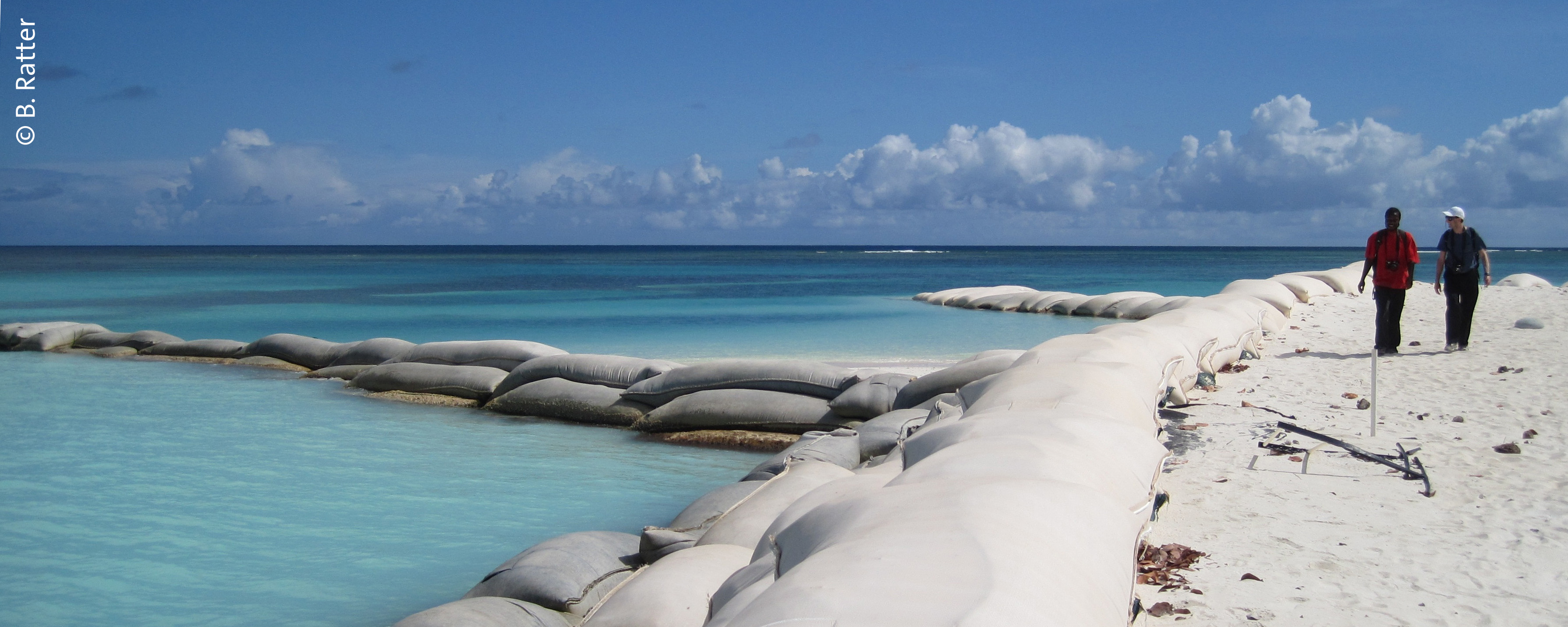Objectives
The scientific objectives of the SPP SeaLevel program

A central scientific aim of the SeaLevel program is to advancing the understanding of climate-related coastal sea level changes and their interactions with socio-economic developments at the coast. For this purpose, it addresses both the natural processes influencing sea level on global and basin scale, the geophysical processes acting on a regional to local scale, as well as the social processes related to human-environment interactions, and the impacts of sea level rise at the coast, such as at the Asian coastal megacities.
How does coastal vulnerability and sea level rise response strategies alter in regions with distinctly different cultural, political and socio-economic contexts, such as at the two study regions of SeaLevel, the North and Baltic Seas, and the South-East Asia?
The main goals of SeaLevel are to:
- improve the physical knowledge base of regional, climate-related sea level change,
- improve regional and local sea level projections,
- investigate which socio-institutional factors enable or hinder coastal societies to cope with changing sea levels,
- determine the natural and social coastal systems responses to future sea level change, and
- assess adaptation strategies to sea level change under given technical, economic, cultural, social and political constraints.
To perform those integrated analyses, sea level change information, including local sea level projections, storm surges, waves and extremes, uncertainty and risk measures need to be provided at their coastlines. SeaLevel aims to regionalize large-scale, climate-related sea level change information on time scales up to 50 years.
For a complete understanding of past, contemporary and future coastal sea level change, we need to:
- quantify at the coastlines the contribution from climate-related factors due to changing atmospheric forcing (including wind stress) and in turn, changes in ocean circulation, mass redistribution, and associated non-uniform thermo- and halo-steric expansion of sea water;
- advance our understanding on regional interactions between the open ocean, shelf sea, ice sheet boundaries and morphodynamics;
- examine regional sea level change predictability at the coastal study areas, and its respective uncertainty information;
- merge dynamical sea level information with responses expected from the solid earth and shoreline due to hydrological and sediment transport processes;
- use this information to investigate socio-economic implications and interactions of regional sea level change, while simultaneously analyze awareness, adaptation needs and responses of coastal communities, and risk management decisions to be implemented in the study regions;
- compare developed versus developing coastal and island nations in different cultural settings, including regional effects, vulnerabilities, resilience, adaptive capacities and response strategies to deal with sea level change, while drawing from previous experiences in the South Pacific, Indian Ocean, the North and Baltic Seas.
By applying a holistic approach to sea level research, outcomes and sea level information from the diverse scientific foci areas and work packages of the SPP SeaLevel program are widely communicated and exchanged among all research projects involved so as to improve e.g. sea level rise projections for the use of coastal communities, as well as to end users, such as for decision making processes and coastal management.
In this way, the SPP-1889 SeaLevel contributes to advance the knowledge basis on quantitative coastal zone management applicable to other endangered places globally, in addition to its two study regions.
